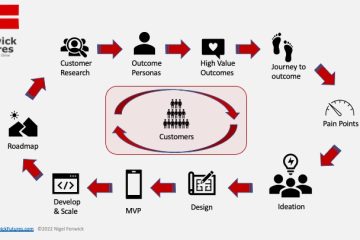Overlay Perceived Value Gained And Lost
We want our journey map from step 2 to reflect where customers change their perceptions of value. Changes in a customer’s value perceptions create opportunities to design disruptive digital products to displace existing touchpoints. Two major challenges exist when we come to mapping perceived value changes over our journey map:
Perceptions of value are unique to the individual. When we buy a car, we all look for things in the car which represent value to us. For example, if I’m looking for a car I can as a dedicated Autocross car, I’m going to be looking for handling characteristics and performance within specific SCCA classifications. These things are going to be of higher value to me than another buyer looking for a daily commuting vehicle. Indeed, it’s unlikely another buyer would consider the SCCA classifications of any value at all in selecting a vehicle. A buyer looking for an environmentally friendly daily driver might value an electric vehicle over a traditional engine. So, our starting perceived value in a product varies based on our own needs and priorities.
Perceptions of value change over time. Our perception of value of our new car changes almost as soon as we drive it away. While the initial perception of value for a new car purchase is typically high, over time maintenance problems and niggling noises can eat away at our perceived value. Other factors beyond the vehicle can greatly impact our perception of value. For example, while a poor service experience at a dealer can significantly decrease our perception of value, excellent service can improve our perceived value. In general, products which help us meet our goals easily, with as little pain/maximum pleasure, and in the least amount of time, will deliver the most value:
- Time invested is a huge component of value delivered. When we ask a customer to give up their time in order to use our product, we’re asking them to give up their most precious asset. Time is the one asset we cannot buy more of. We all have a finite amount of time to use – 24 hours in each day. And we all have a limited number of days, and none of knows how many we have. If we design a product which can save customers a significant amount of time, we can create enormous perceived value. Uber and Lyft create value by saving drivers time finding customers and by saving passengers time finding a car to get from point a to point b. Amazon saves customers time by making it easy to find products they need and get them delivered quickly. Netflix grew by saving customers time to find a movie they would like. Indeed, most of the disruptive digital companies create perceived value by saving their customer’s time.
- Pain and pleasure are two sides of the same value coin. When we’re doing something because we have to – e.g. filing our tax return – we want to remove as much pain from the process as possible. Even so, it’s never going to be pleasurable. When we’re doing something because we want to – e.g. going on vacation – we want to increase the pleasure as much as possible. When designing digital products, we want to be clear which side needs our focus.
Using the research done into the customer’s journey to the outcome, overlay changes in perceived value across key touchpoints in the journey. Areas where customer value is erased are key opportunity areas for disruptive product innovation.

0 Comments